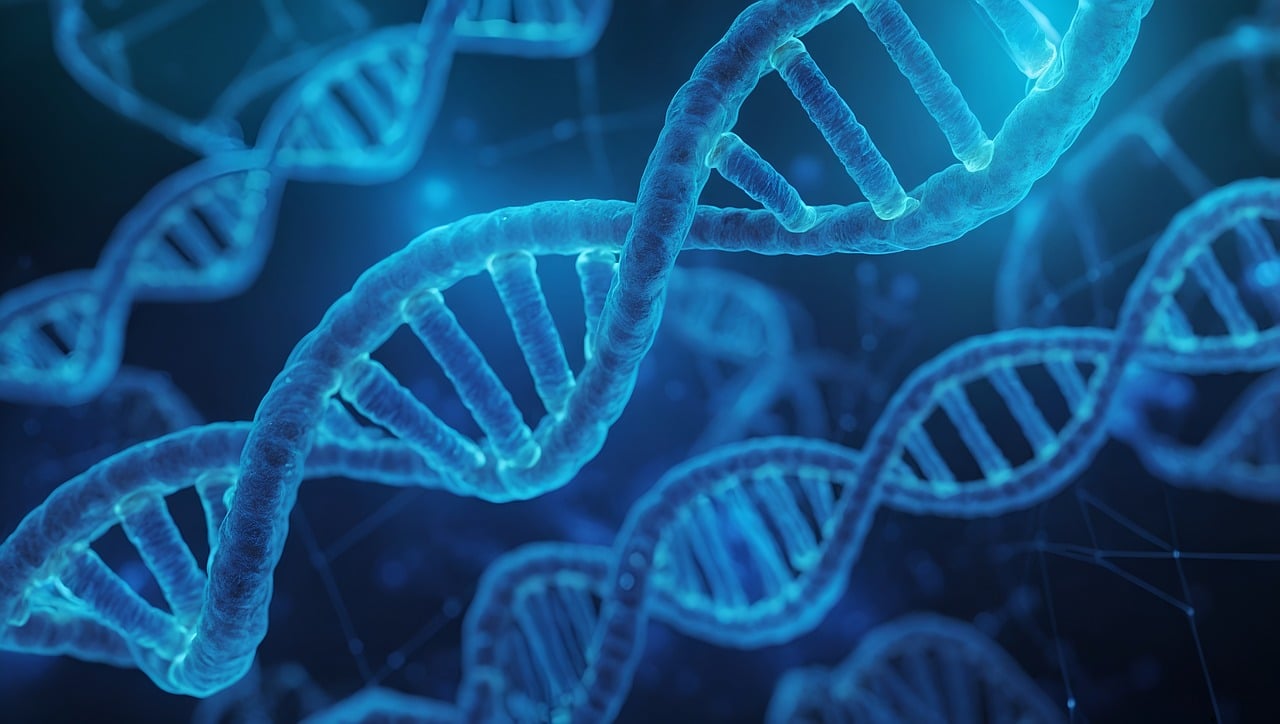
Vocabulary:
I will read the words, meanings, and sample sentences. Then, repeat after me.
- equivalent /ih-KWIV-uh-luhnt/
- genome /JEE-nohm/
- chromosome /KROH-muh-sohm/
- gill /gil/
- swampy /SWOM-pee/
[adjective] – having the same amount, value, purpose, qualities, etc.
The two job offers were equivalent in terms of salary and benefits.
[noun] – the complete set of genes or genetic material present in a cell or organism
Scientists are working to map the genome of various plants to improve crop yields.
[noun] – structures within cells that contain DNA and carry genetic information
Human cells typically have 23 pairs of chromosomes.
[noun] – organs that fish and some amphibians use to extract oxygen from water
Fish use their gills to breathe underwater.
[adjective] – describing an area that is wet, muddy, and marshy
The hikers struggled through the swampy forest, where the ground was damp and difficult to walk on.
Article reading:
Please read the whole article. Then, I will check your pronunciation and intonation.
Scientists have mapped out the DNA of the South American lungfish, a freshwater species found in Brazil, Argentina, Peru, and other parts of South America. Known scientifically as Lepidosiren paradoxa, this species is remarkable for its close similarity to the first land animals, going back over 400 million years. The South American lungfish holds the record for the largest DNA of any known animal, with its genetic plan measuring approximately 30 times larger than that of humans. Published in the journal Nature, the study showed that the lungfish’s DNA has grown significantly over the past 100 million years, growing by the equivalent of one human genome every 10 million years.
The lungfish’s DNA is made up of 18 chromosomes, each of which is individually larger than the entire human genome. About 90% of this DNA consists of repeated parts, which researchers believe expanded due to a reduction in the systems that usually control such repetition. The lungfish can grow up to 1.25 meters in length and is unique in its ability to breathe both through gills and lung-like organs, allowing it to survive in oxygen-lacking environments such as the swampy areas of the Amazon and Parana-Paraguay River basins. The study offers important insights into the evolution of tetrapods, the first animals to move from water to land, by examining the lungfish’s genetic plan. This research helps us understand how early animals developed key features like limbs and lungs, which were necessary for their adaptation to life on land.
The lungfish’s DNA is made up of 18 chromosomes, each of which is individually larger than the entire human genome. About 90% of this DNA consists of repeated parts, which researchers believe expanded due to a reduction in the systems that usually control such repetition. The lungfish can grow up to 1.25 meters in length and is unique in its ability to breathe both through gills and lung-like organs, allowing it to survive in oxygen-lacking environments such as the swampy areas of the Amazon and Parana-Paraguay River basins. The study offers important insights into the evolution of tetrapods, the first animals to move from water to land, by examining the lungfish’s genetic plan. This research helps us understand how early animals developed key features like limbs and lungs, which were necessary for their adaptation to life on land.
Discussion Questions:
I will read each question. Then, please answer them.
- Have you ever encountered an animal with unique features or abilities that fascinated you? If so, what made it interesting? How did it compare to other animals you know? If not, what features do you think would make an animal interesting to you?
- Have you ever learned about the evolution of species in your studies? If so, which species did you find most intriguing and why? If not, what aspect of evolution would you like to learn more about?
- Do you agree that studying the DNA of ancient species is crucial for understanding the history of life on Earth?
- What can the study of the lungfish’s DNA tell us about how early animals might have evolved to live on land?
- Why is it important for scientists to study animals with unique traits, like the lungfish, to learn about the history of life on Earth?
Summarization
Please summarize the whole article using your own words and expressions. You will have one minute to prepare before you answer.
Describe:
Please explain the definition of each word listed below based on your understanding. You can provide example sentences if needed.
- species
- evolution
- develop
- feature
- oxygen-lacking environment